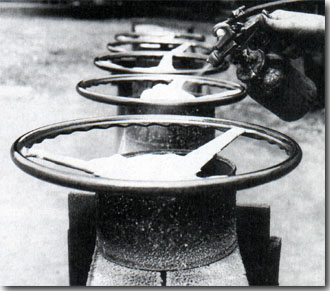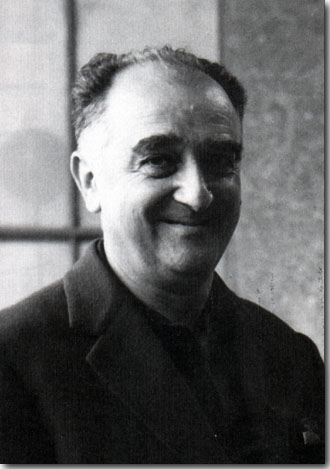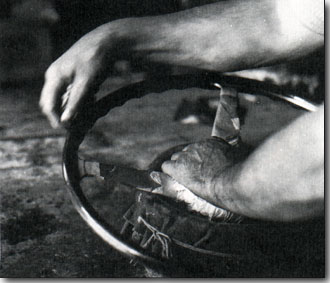

When we asked photographer RICK McBRIDE to search his long-forgotten files for pictures that might be of special interest to FORZA readers, he sent us this series from a visit with the master creator of steering wheels, ENRICO NARDI, dated 1963.
 I was fascinated by Signore Nardi and his wheels. The walls of his office were covered with signed photographs from the giants of the sport, a choice location going to a picture of Alberto Ascari sitting in the first Ferrari - the vettura 815. He expressed particular pride over the strength and integrity of his wheels which, according to him, had saved many a race driver from serious injury.
I was fascinated by Signore Nardi and his wheels. The walls of his office were covered with signed photographs from the giants of the sport, a choice location going to a picture of Alberto Ascari sitting in the first Ferrari - the vettura 815. He expressed particular pride over the strength and integrity of his wheels which, according to him, had saved many a race driver from serious injury.  After my visit with Signore Nardi, I was taken around to the various work stations and promised that I could take pictures (these were intended for Road & Track but were n ever used, and while looking for the photos in preparation for this article I found a letter sent to me many years later from the then-editor, Dean Bachelor, excusing the delay in returning the material), but I soon discovered that many aspects of the operation were jealously guarded secrets, so much so that to many of my questions I was given a terse but polite segreto (secret) as an answer. It went like this:
After my visit with Signore Nardi, I was taken around to the various work stations and promised that I could take pictures (these were intended for Road & Track but were n ever used, and while looking for the photos in preparation for this article I found a letter sent to me many years later from the then-editor, Dean Bachelor, excusing the delay in returning the material), but I soon discovered that many aspects of the operation were jealously guarded secrets, so much so that to many of my questions I was given a terse but polite segreto (secret) as an answer. It went like this: Want more information? Search the web!
Search The Auto Channel!